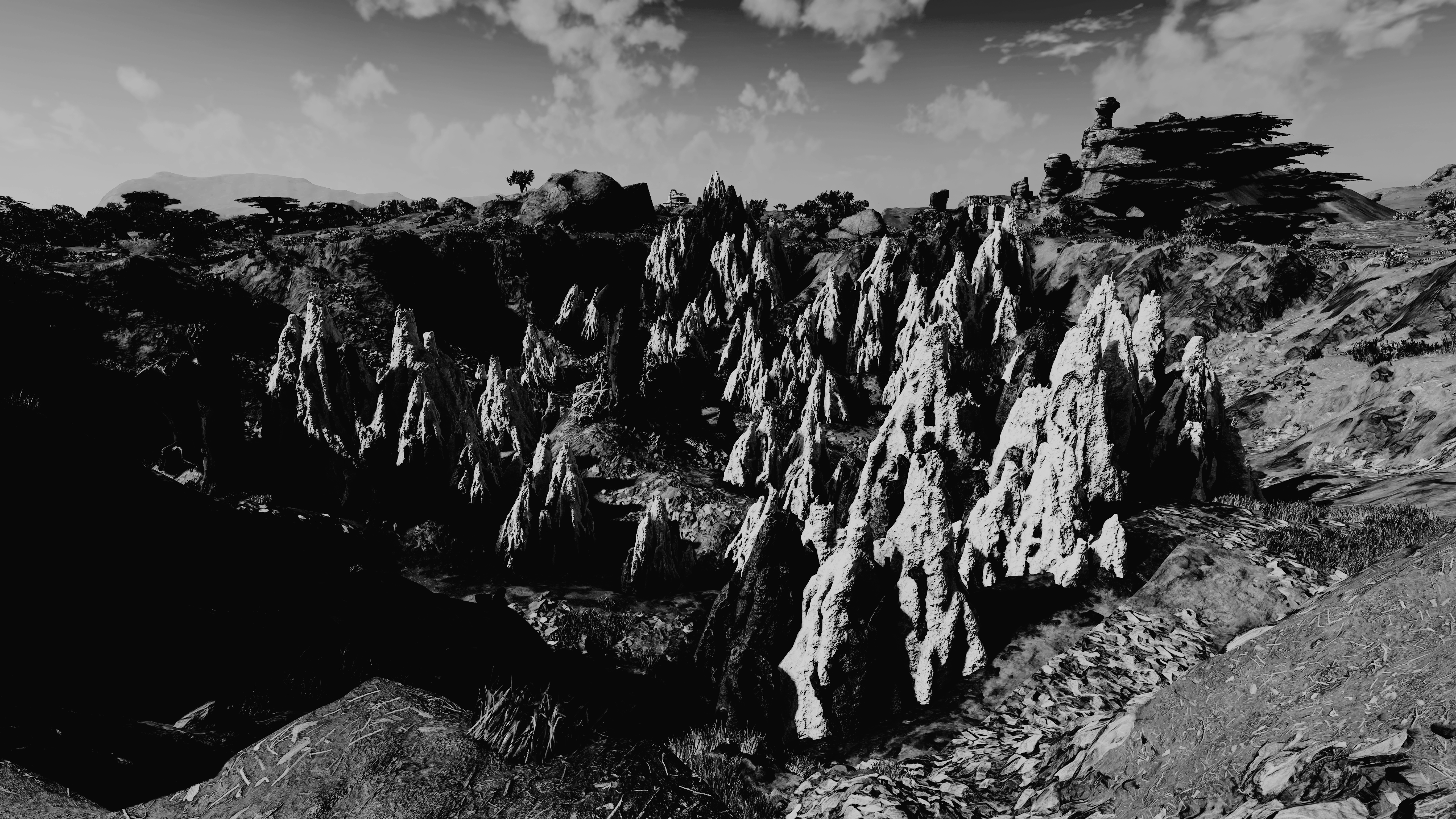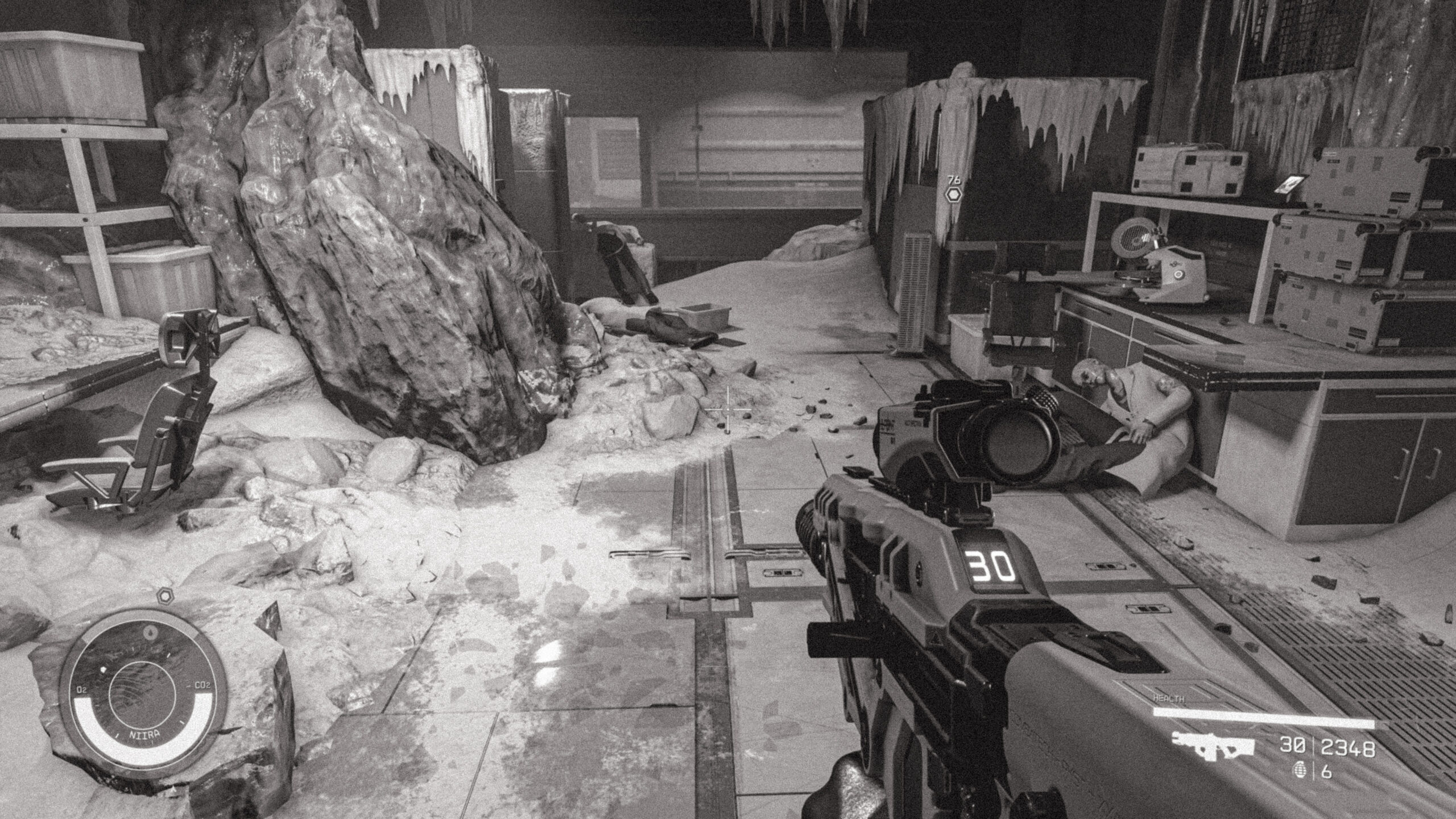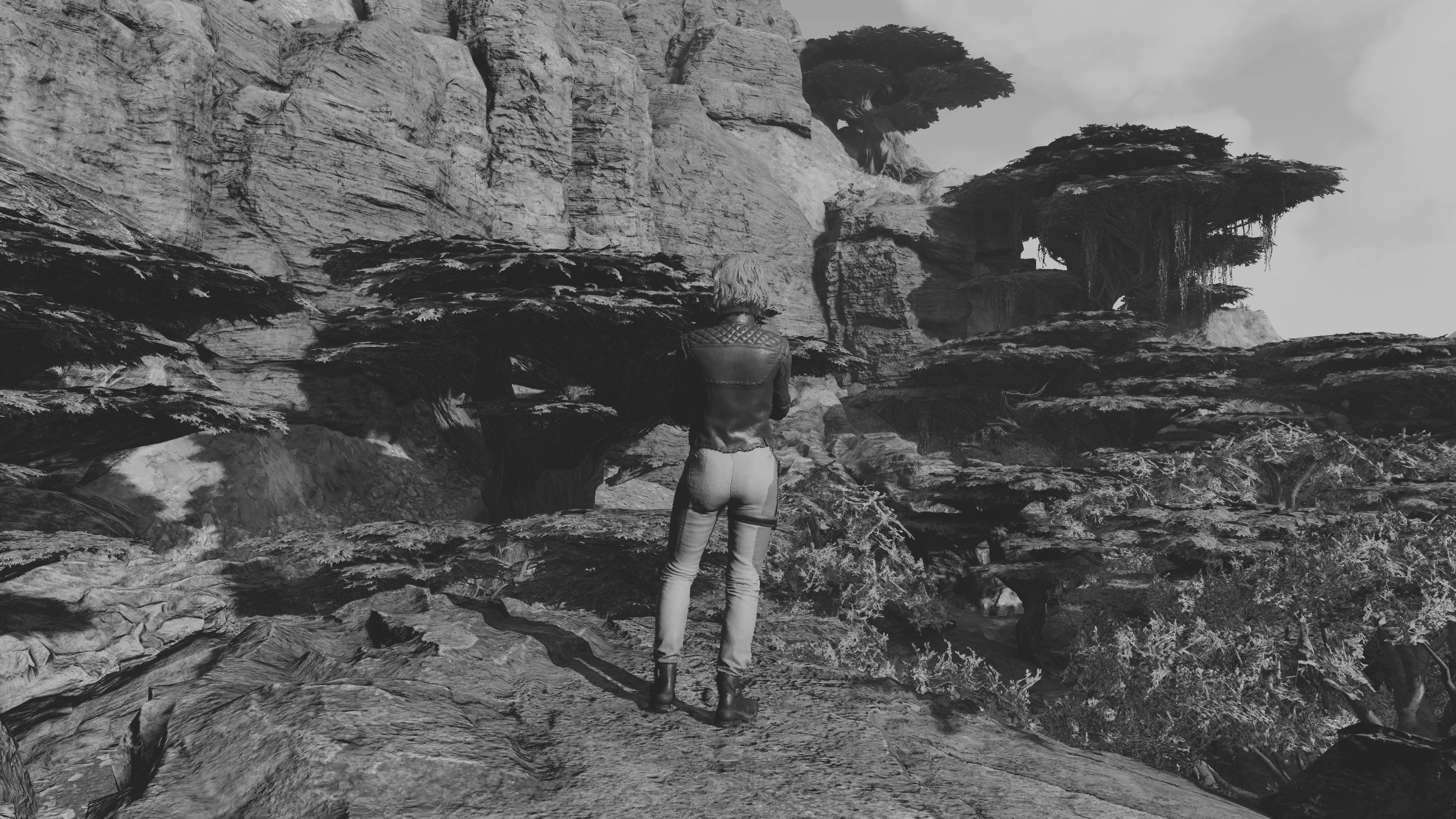1872 words
With almost eighty hours logged into Bethesda’s first new intellectual property in decades, I am left disappointed. There are countless reviews of Starfield on the internet, and for that reason, many aspects of the game, such as gameplay, will not be covered here. We will focus on why I stopped playing and why, if you are on XBOX, you should play this game on GamePass and not purchase it outright.

A Failure to the Genre:
A successful work of science fiction or fantasy marries genuine wonder and awe for another reality while still being recognizable by tackling issues we face today. While Starfield does not lack in addressing issues such as colonialism, capitalism, and property rights, it fails to offer any sense of wonder and meaning while doing so. This is a critical failing for a game that, though it is mainly about talking to others between shooting things, is built upon exploring.
The game’s maps, set on different planets, are primarily procedurally generated with buildings or caves that do not vary in their designs. This results in the player running into the same buildings and caves repeatedly. This eliminates any sense of wonder, for no matter how far one ventures in the galaxy, they are raiding the same compound with the exact same layouts. Any notion of exploration and wonder is absent in this game, and this is inexcusable. In over-extending their efforts in creating as many planets as possible, we are left not with any quality, but with a sheer repetitive mediocre quantity that is mind-numbing after a dozen hours of gameplay.
What makes this truly an egregious failure is that this happened in a Bethesda single-player role-playing game, which presents an immense issue for the player.

Repetitive environments, creatures, characters, and buildings make for a trying experience.
A Failure to the Bethesda RPG Legacy:
I, like many, play these sorts of RPGs at a pace that, when viewed from a third party, can be regarded as comical. There are one or two Armageddon-level missions that your character is encouraged to get involved in. Still, instead, you find yourself doing unimportant fetch quests and picking the exact flower you did on the other side of the galaxy twenty hours prior. These small missions themselves are repeated across the many planets within the game, and they all have you returning to the exact same small series of caves or buildings.
When I did continue to progress the main storyline, I came upon the exact same building compound design that I had at least five times before, which immediately ruined any immersion or ability to care for the game going forward. Within these buildings, all chest, safe, character, enemy and item placements are nearly identical.
This was fine for Bethesda’s 1996 release, Daggerfall, but this is not acceptable today.
A Failure of Imagination:
This failure in an effort to build enough variants of caves and architectural compounds is amplified when looking at the alien wildlife and vegetation in the game. There is a disturbing amount of repetition from world to world. This was amusing in games made over a decade ago, such as Dragon Age, but they are not acceptable in a game that was marketed with the lofty claims that Bethesda had made over the years. Slight pigment changes in the three to five organisms that you encounter in each world are ones that you have undoubtedly seen before. This makes the task of exploring the world, once again, a chore that leaves little to a sense of wonder.

This was the fifth time, on a fifth different planet, that I stumbled into the exact same room with the same depressing scene, with the exact same three dead scientists. At this point, I stopped caring about the game and never revisited the title.
This is obviously due to technical limitations. Bethesda tries to get around this by setting familiar in-game assets in multiple procedurally generated maps, which, at the end of the day, all feel the same, for they contain the same content. Obsidian Entertainment’s The Outer Worlds tackled this by restraining the game’s scope to one solar system and, like Starfield, claimed that humans were spreading the same species across multiple ecosystems and planets. This is a cheap tactic, but one made more digestible within a single solar system, not multiple ones spanning a galaxy. Furthermore, given that each planet’s map can be endlessly generated, there is no incentive to explore such worlds. The player has already seen everything that the game has to offer after a dozen hours.
However, The Outer Worlds also did something that Starfield did not, and that is to create a compelling game with interesting writing and consistent art direction, which informed the characters and non-repetitive dialogue.
A Failure to Seem Plausible
All the characters that the player is encouraged to take with them on their ships repeat the exact same lines of dialogue. Every single time I would enter my ship, the character Sam Coe and his daughter would have the exact three conversations, which became so irritating that it directly influenced the order in which I took on the missions. I immediately tackled all of Coe’s missions to reach the end of his relationship line of code so I could leave him behind. This was done only to receive more characters that would do the same. This also occurs if you have them as companions on missions where they constantly talk. This is infuriating if you are playing most of the game as a stealth-based character, and once again, it breaks immersion and interrupts gameplay.
Good science fiction makes the struggles of the universe it is in and its characters relatable. This thin level of dialogue and frequent repetition betray this and make Starfield definitively a bad work of science fiction, especially since the main mystery of the game is not resolved and leaves an open-ended and vague question that was not compelling to begin with. Also, you have the option to “romance” almost every companion simply by keeping them around and not acting like a genocidal maniac. I do not know which reality this is true, but this further results in very bad fiction, for none of the character relations are believable. This is simply lazy writing.

Like all companion characters and their missions, the player is presented with empty shell archetypes that have nothing to offer but repetitive breaks in one’s gameplay.
The Outer Worlds had a very clearly defined crisis and created detailed and contained environments and characters that matched the art direction well. This is not done successfully here with Starfield and its generic and inconsistent designs, evident in its failed futuristic technology.
A Failure in Putting the Effort Forward
It is one thing to pursue a sub-genre, such as the science fiction western, such as the show Firefly, but it is another thing to employ those designs in a project that does not fit within that genre. The robots, ships and environmental exposure suits (space suits) are primarily recognizable as something that could be patched together today. This would be fine if this applied to everything, such as the cities and towns. Unlike Firefly or The Outer Worlds, this is not true for Starfield.

The western-influenced town of Akila.
The ships are primarily made up of large containers with different grades of smoothness to their edges. These grades are directly translated to how “nice” these are. The smoother the ship’s design, the more fancy.
This presents a problem which is mirrored in the robots in the game. The robot attack dog looks like an early iteration of the Boston Dynamics robot dog, Spot. This game takes place three hundred years in the future. Ship, weapon, and robotic designs have not moved forward but backwards. Architectural design across all planets, save for the western-inspired city of Akila, also remains stagnant and lacks any distinctive character. The Mass Effect series had a cohesive art design. As a result, it was easy for players to become immersed in the experience on offer and to gain a genuine emotional attachment to the Mass Effect series. This is not true with Starfield.
The special edition watch, which cost nearly $400 USD makes a single appearance at the start of the game, and it too is underwhelming and dated. As the game started, I looked down at the Garmin Descent Mk2 on my wrist, and every aspect of the design of my Garmin was at least twenty years ahead of the Starfield smartwatch. This game is supposed to take place three hundred years in the future.
By giving themselves such a large task with Starfield, the efforts put into this title were spread too thin, and the game suffers on every level.
Conclusion:
It is without a doubt that Starfield was an immense undertaking by Bethesda. It is a project with a scope too large for its production timelines, number of staff, and the technology to handle. Much has been made about the realistic scales of the solar systems and how one could conceivably fly from one planet to another. This would have been fine for a spaceship game such as Elite Dangerous, where Starfield copies most of its spaceship gameplay mechanisms. However, for an RPG, which ultimately is about interacting with characters and progressing a story which is hopefully compelling, this simply does not matter. It may be impressive for a couple of hours, but it wears thin very fast.
If one is running a kitchen that is only staffed and tooled to make five meals an hour but one decides to make one hundred meals an hour instead, one will fail. This is where Starfield fails. Its scale was too large for the tools and amount of time Bethesda, ZeniMax and their relatively new owners, Microsoft had.

Though major set pieces may seem impressive at first, the lack of quality elsewhere is striking as one progresses through the game.
Larian Studios gave their title Baldur’s Gate 3 a six-year development cycle, and that game is heralded as one of the best games ever made. Since Bethesda has titles such as the MMO titles Fallout 76 and Elder Scrolls Online to lean on, they would have been better off tightening the scope of Starfield and giving it another few years to develop properly. Though releasing more titles will benefit Bethesda and the companies it sits under, this is not beneficial for me, the consumer. The amount of media, books, and hobbies which are competing for my time are too great to mention here, and a mediocre title such as this leaves me disappointed. Bethesda’s next release, The Elder Scrolls 6, is a game that I would normally have been excited about, but this is no longer the case. Not only have I lost faith in Bethesda’s ability to make a good single-player game, but I have also lost faith in those who report on the medium, for these points of criticism that I have made here were not addressed.
As it stands, Starfield feels like a draft of a much larger game that is in desperate need of revisiting its outline before evaluating the extent of its project. Thus, Starfield is not worth the $70 USD asking price but is a decent offering as a part of a GamePass subscription. This is only true if you are already subscribed and using this service. It does offer an opportunity for you to throw away hundreds of hours into a shallow, tedious and monotonous experience. At least through GamePass, it is up to you to uninstall it and potentially revisit it whenever you feel like raiding the same outpost if you are the sort of person who values doing the same task over and over again highly.
Time of writing: September 16th, 2023